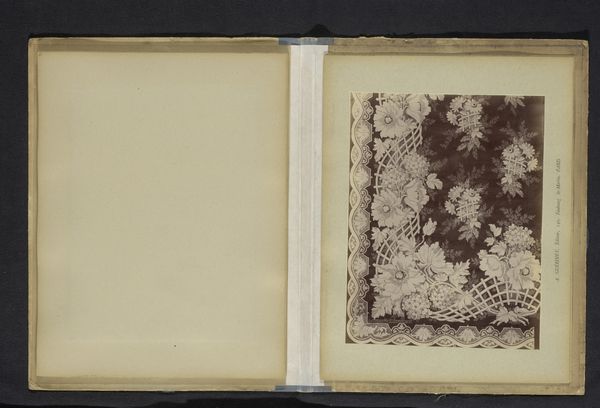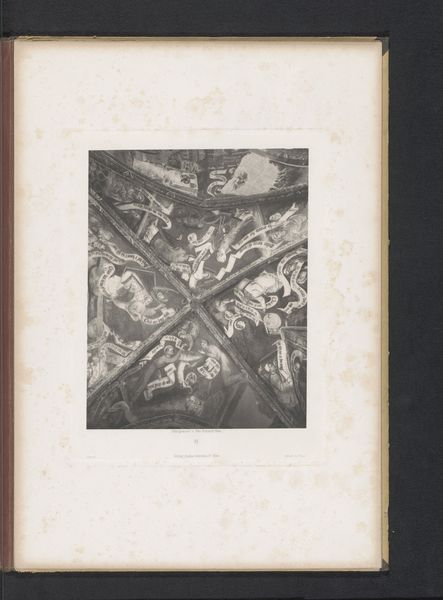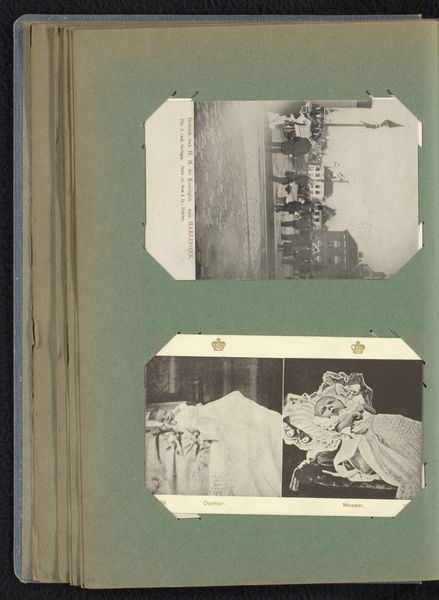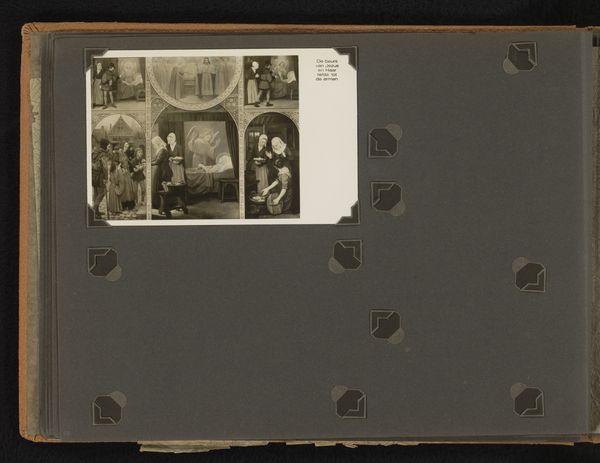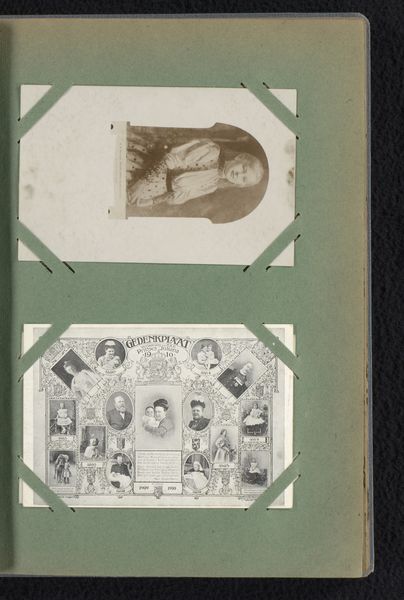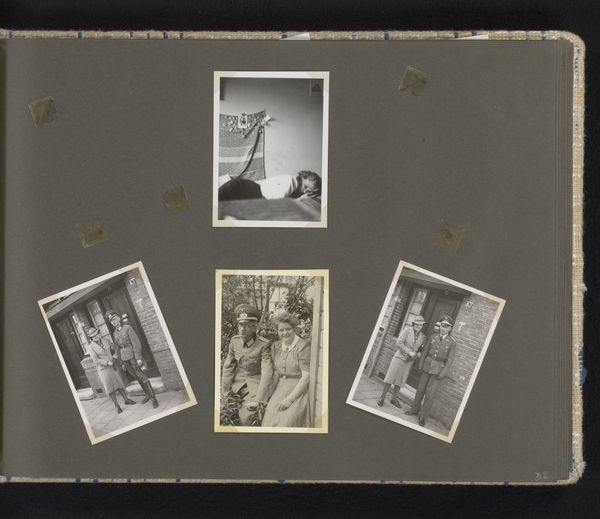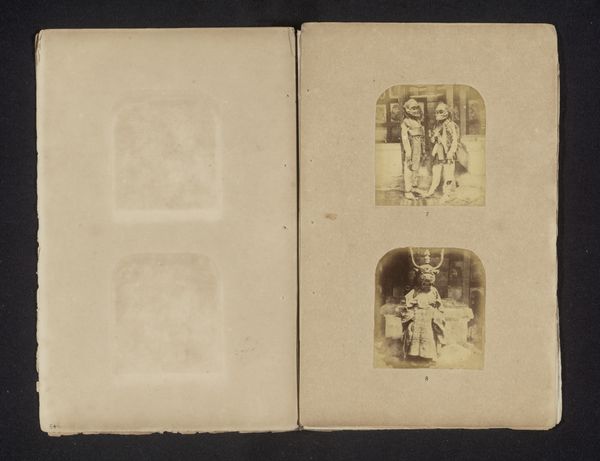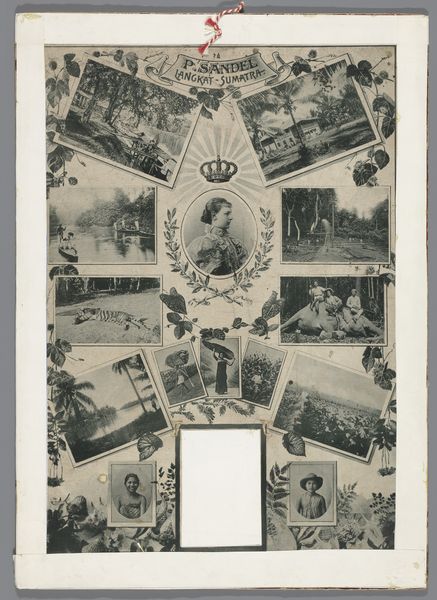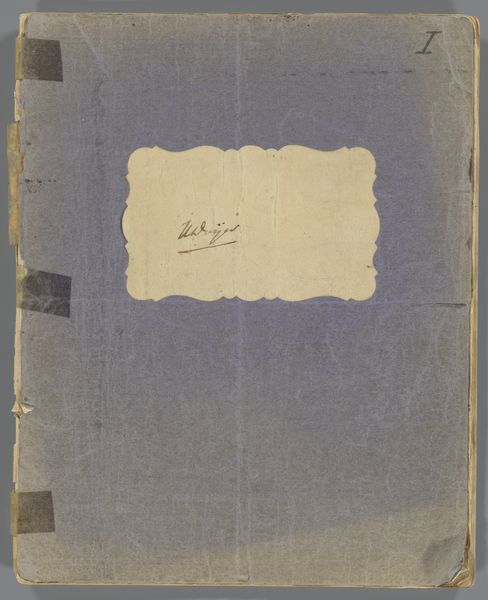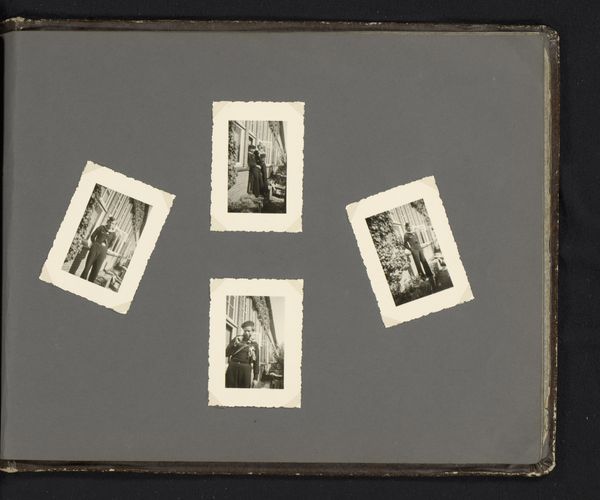
drawing, lithograph, print, etching
#
drawing
#
neoclacissism
#
lithograph
# print
#
etching
#
academic-art
Dimensions: height 169 mm, width 150 mm
Copyright: Rijks Museum: Open Domain
Editor: So, this is J. van Sittert's "Bedriegertje met vijf tekeningen en prenten," from 1793, done in a mix of drawing, lithograph, etching, and printmaking. It's really quite…fragile-looking, almost like a collage of little memories. What jumps out at you when you look at this piece? Curator: What strikes me is the very self-conscious performance of "art." Look at the deliberate, almost playful, arrangement of prints and drawings within the larger drawing. This reflects a period grappling with art's role in society and its definition within emerging institutions like academies and museums. What kind of dialogue do you think it creates with the viewer? Editor: It's like the artist is saying, "Hey, look at all the art I know how to make, or at least reproduce!" I guess in a way, it is making art accessible. The arrangement, though, almost hides the images… why arrange these pieces so they seem like scraps, maybe? Curator: Precisely! It reflects Neoclassicism's academic ideals. Each image, while fragmented, embodies a canon—idealized landscapes, classical figures, still lifes. The art schools encouraged the mastery, dissemination, and collecting of such approved artworks. But that staged disorder? That could be a subtle comment on the art world, its chaotic accumulation, and how we make sense of it. Does it remind you of any contemporary art practices that it may relate to? Editor: In the sense that it questions the idea of the perfect image or artwork, absolutely! It makes you wonder who would put something that appears so careless in a frame in their homes. This also makes me wonder about its market at the time. I hadn't quite considered it could be trying to say something. Curator: Exactly! We’ve considered its composition, the context of academic art, and its possible subversive elements. It's a piece that challenges simple categorization, which ultimately leads to more nuanced conversations, don't you think? Editor: It definitely does! It seems so much more involved with how society thinks about art, collecting art, and making it than I gave it credit for.
Comments
No comments
Be the first to comment and join the conversation on the ultimate creative platform.
